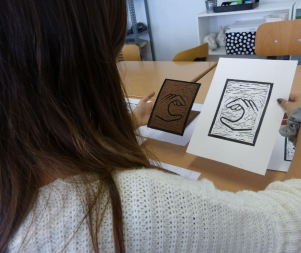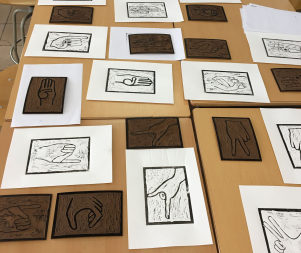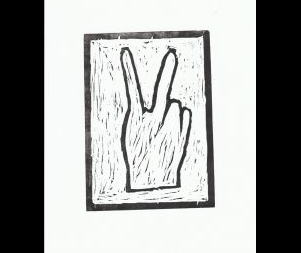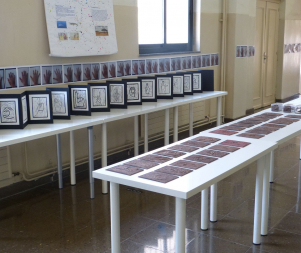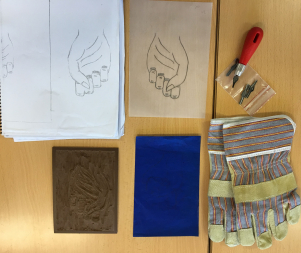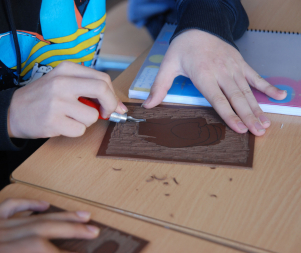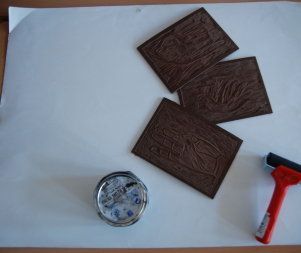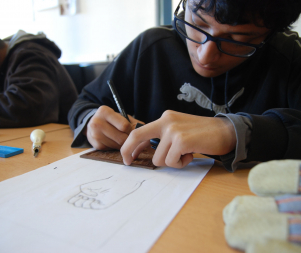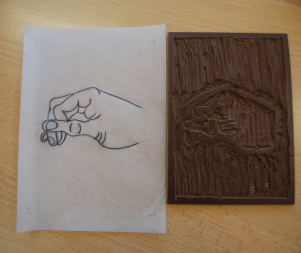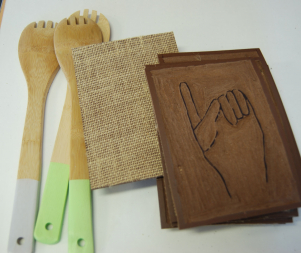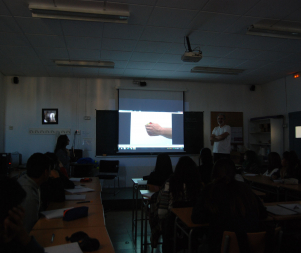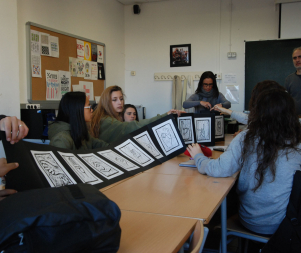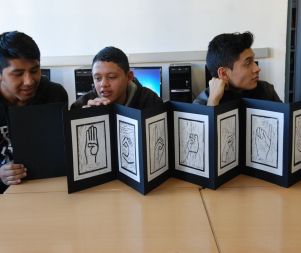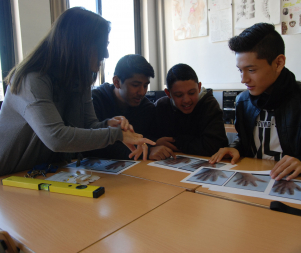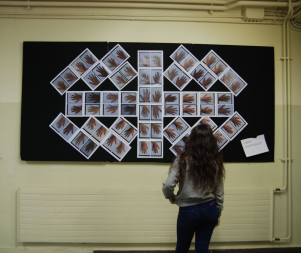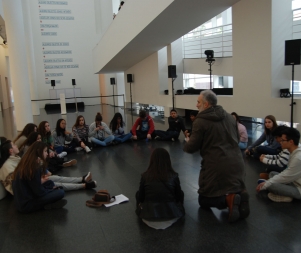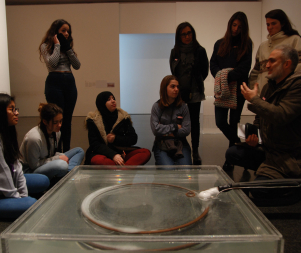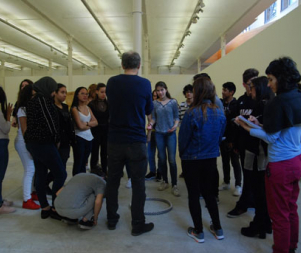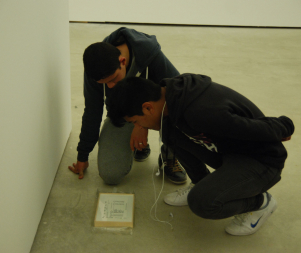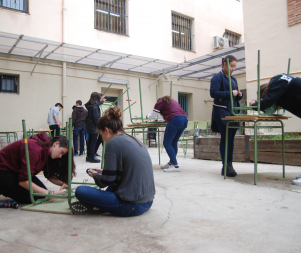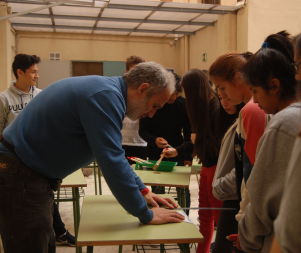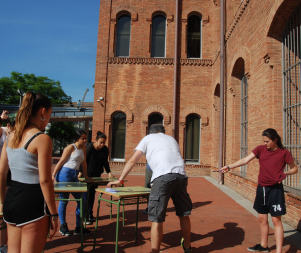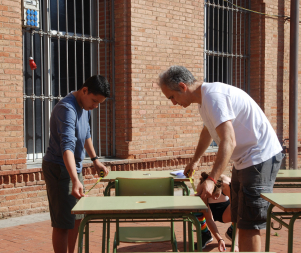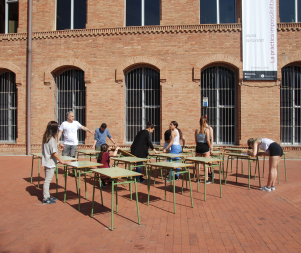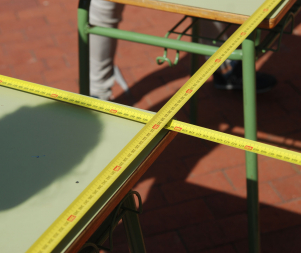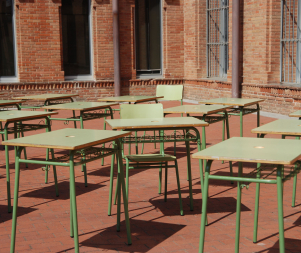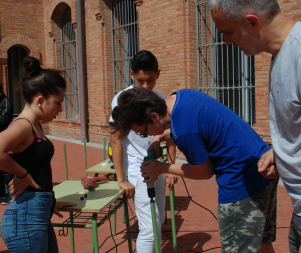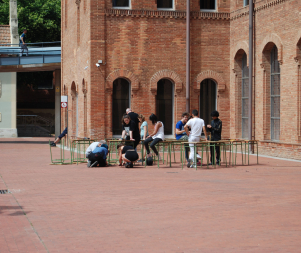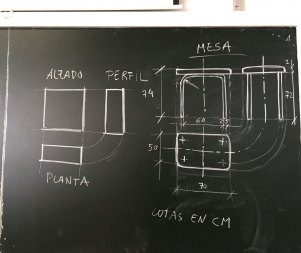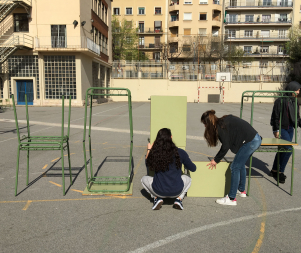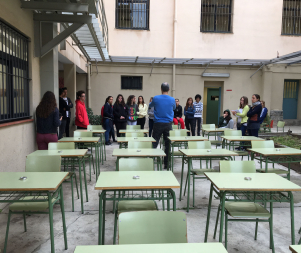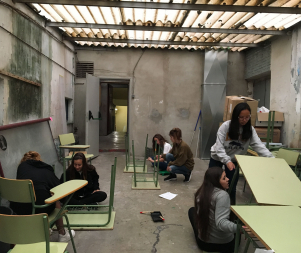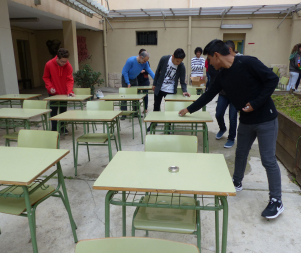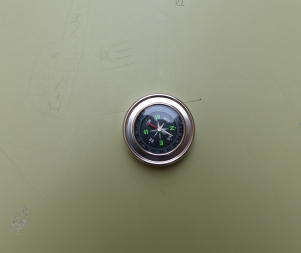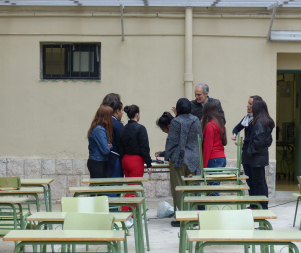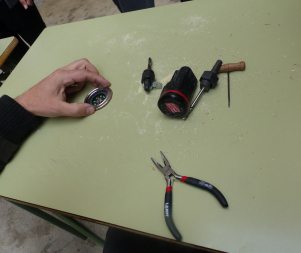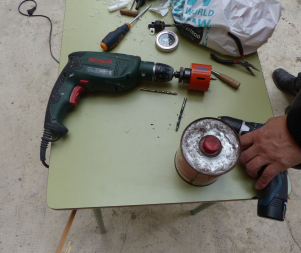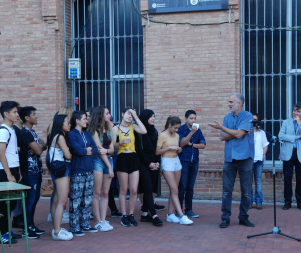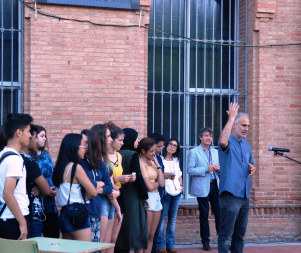- 14th EDITION 2022 / 2023
- 13th EDITION 2021 / 2022
- 12th EDITION 2020 / 2021
- 11th EDITION 2019 / 2020
- 10th EDITION 2018 / 2019
- 9th EDITION 2017 / 2018
- 8th EDITION 2016 / 2017
- 7th EDITION 2015 / 2016
- 6th EDITION 2014 / 2015
- 5th EDITION 2013 / 2014
- 4th EDITION 2012 / 2013
- 3rd EDITION 2011 / 2012
- 2nd EDITION 2010 / 2011
- 1st EDITION 2009 / 2010
Jaume Pitarch IN RESiDENCE at the School Moisès Broggi
Communication and sign language
The process begins with drawing. Drawing as a space for introspection and knowledge. We are invited to pay attention to what is closest to us. Chillida emerges as a reference. Hands as a nearby landscape, which we begin to look at and rediscover in silence. Silence, sign language, communication and lack of communication begin to emerge as important themes, present throughout the process
linoleum and editing an artist's book
The time for drawing and the time for engraving. The group are invited to discover a technique to give definitive form to all the work on the hands and on sign language. The engraving work culminates in the edition of a unique artist's book, a large, three-metre-long fold-out display containing each pupil’s engravings.
Hands Project... Maniobra [Manoeuvre]
At the same time, another issue arises: we know our own hands as something very close to us but, among many other hands, would we be able to recognise them? This question leads a group of students to photograph the hands of all the people in the education community at the school.
The exercise of naming
Titles are important in the work of Jaume Pitarch. The group now takes the works of Joan Brossa, renaming them and meditating on the use of objects as elements for creating the pieces. This exercise is followed by brainstorming and a process of conception to find a title for the artist's book and the exhibition project on hands at the school. Finally, the process is closed and the work done is exhibited under the project title of Maniobra [Manoeuvre].
The street and the objects we find there
The second term begins with the group’s eyes on the exterior. If, so far, the exercise has been largely introspective, the idea now is to look at objects in street, what the city abandons and is left unused, dumped in the road. A visit to the neighbourhood is organised to observe such phenomena and to gather together some of these objects.
Visit to MACBA
A visit to Barcelona Museum of Contemporary Art (MACBA) is organised in cooperation with the museum education service, and related to t the creative process. The artist himself, Jaume Pitarch, is the group’s guide. A parallel project emerges at the same time, based on a random event. This is La clau núm. 5 [Key No. 5].
Unused objects at the school
The search for unused objects leads the group to discover the storage rooms and the materials left there at the school itself. This work also includes the arrangement in words and the research into the objects and the words they form.
Visit to the Tecla Sala Art Centre
The opening of Pitarch’s solo show at the Tecla Sala Art Centre leads the group to visit the gallery, with a dual purpose: to see some of the artist’s work at first hand; and to learn about the process of assembling a show, the exhibition spaces and the concept.
School desks and chairs: material we can work with?
The discovery of some storage rooms at the school itself opens up the possibility of working with larger objects than the group had used so far. Accordingly, the work now focuses on studying the desks and chairs in the classrooms. At the same time, the pupils draw the desks as a Multiview projection, and take measurements of the objects ready to make the scale drawing.
The reception classroom
As the formal research proceeds, concerns emerge among the pupils about the lack of a reception classroom at the school, the arrival of new migrant pupils at the school and the impossibility, in some cases, of communicating with them. Through discussion, this concern emerges as the central theme that the entire project will revolve around. The group reviews the work done and conceives the final piece, which entails building a reception classroom and placing it in the open, at the mercy of the weather.
Sessions devoted to construction and assembly
The final stage in the creative process centres on the construction of the work. Several sessions are devoted to designing the form of the installation, how they will intervene the desks, how the furniture will be protected from the weather and how the furniture will be anchored.
Assembly is a crucial stage in the process, as this is when the piece takes on real form: the direction where north will be, the position of the desks with regard to north, the measurement of the grid in which the classroom will be placed.
Presentation final
The installation [Reception Classroom] was presented in the courtyard of the Tecla Sala Art Centre at 6.30 pm on May 25. There, the pupils, with Jaume Pitarch and teacher Fanny Figueras, described the work process and explained the installation itself. The presentation was attended by friends and families, representatives from Barcelona Institute of Culture and Barcelona Education Consortium, and other people from the world of culture.
Actions linked to the project
- Wandering the streets (25/1/2017)
Observation of the city, wandering the streets and studying materials and object left in the public way were the main lines of action behind this outing.
http://blocsenresidencia.bcn.cat/moisesbroggi1617/index.php/2017/02/06/exploracio-urbana-i-visita-al-macba/
- MACBA (25/1/2017)
A visit to the Barcelona Museum of Contemporary Art (MACBA) is organised in cooperation with the museum education service and guided by the artist Jaume Pitarch. A guided tour of some of the works considered most relevant to the project.
- Visit to the show by Jaume Pitarch (14/2/2017)
Visit to the Tecla Sala Art Centre to see Jaume Pitarch’s solo show La pràctica impossibilitat del dejuni [The Practical Impossibility of Fasting]. Besides discovering the artist’s work at first hand, the pupils also see the spaces where they will later install the final piece in their project.
- Assembly of the installation (15/5/2017)
Several work sessions are devoted, in small groups, to deciding the arrangement of the installation and how to assemble the show in the outer courtyard at the Tecla Sala Art Centre.

